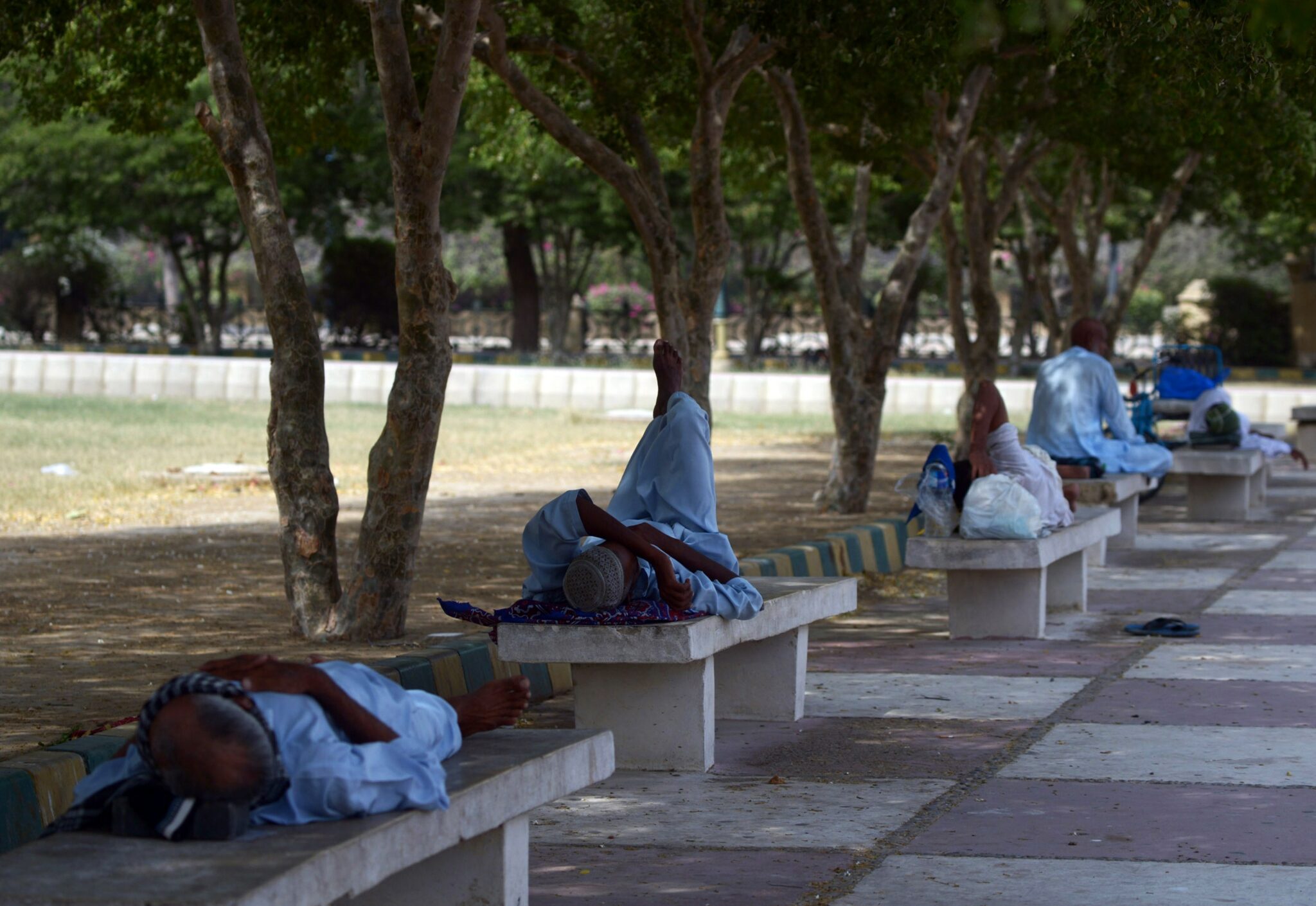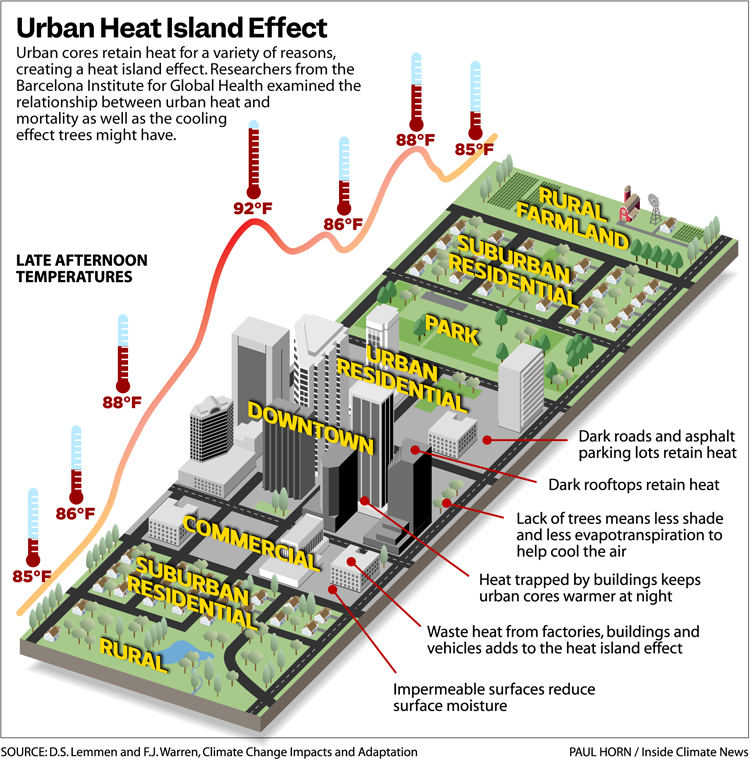 Pakistani men rest in the shade of trees during a heatwave in Karachi on June 23, 2015. Credit: Rizwan Tabassum/AFP via Getty Images
Pakistani men rest in the shade of trees during a heatwave in Karachi on June 23, 2015. Credit: Rizwan Tabassum/AFP via Getty ImagesPast studies have linked urban heat with increased mortality rate and hospital admissions for adults and children. This link between high temperature and mortality holds both in times of extreme and moderate heat. In addition to conducting a similar analysis between urban heat and mortality, the Institute of Global Health’s study went on to estimate possible reductions in temperature and mortality that may result from increased tree coverage.
To establish the reduction in heat-induced urban mortality from increased tree coverage, researchers first compared mortality rates in warmer urban areas with mortality rates in cooler non-urban areas. This allowed them to estimate the relationship between increased temperature and mortality in urban areas. Researchers were then able to estimate the degree to which planting more trees could decrease temperature and thereby urban mortality rates. Specifically, a 30 percent increase in tree coverage could lead to 40 percent fewer deaths from urban heat.
Mark Nieuwenhuijsen, a research professor at ISGlobal and the study’s senior author, said the strength of their paper is in its holistic analysis of the issue. By linking heat, mortality and urban greening, the paper is able to stand at the “nexus of the climate crisis, urban forestry, health and urban planning,” said Nieuwenhuijsen, who also directs ISGlobal’s urban planning, environment and health initiative.
Through analyzing urban greening’s impact on heat-induced mortality, the paper is uniquely able to recommend solutions. Patrick Kinney, a professor of environmental and urban health at Boston University who was not involved in the study, said that while the paper’s estimated impacts of planting more trees aren’t exact, they are useful in illustrating to “policymakers that there are potential benefits of intervening in the urban space and changing land use.”
“This is a good example of how public health information can be integrated into climate planning, and urban planning,” said Kinney. “And I think that’s something that we ought to do more of, because as long as we’re taking action to combat climate change, we ought to be at least thinking about how we can do it in a way that’s also promoting health and equity.”
As cities get warmer with climate change, many are trying to figure out ways to reduce the temperatures and adverse health impacts, Kinney said, adding that the study’s findings are “very relevant to what lots of cities are doing to try to adapt to climate change, to make climate change less impactful on the local community.”

Nieuwenhuijsen said that mitigating heat-induced urban mortality requires multiple avenues of action, as well as patience. He explained that about 85 percent of the fuel emitted by cars is emitted as heat, while “only 15 percent is used to move the car forward. So you’re also looking to see, can I reduce other things that actually produce the heat?” Niuewenhuijsen suggested the creation of more bikeable and walkable cities to counteract these effects of car travel.
In the study, Nieuwenhuijsen and colleagues proposed “replacing impervious surfaces with permeable or vegetated areas” and increasing the use of light colors on city roofs and walls as a means of possibly reducing urban heat. However, the most cost-effective and simple method of combating urban heat may be to simply plant more trees in cities and preserve those that already exist, the study said.
As far as trees go, Nieuwenhuijsen said that “it’s not as much about planting more trees, but in particular, also preserving the current trees that we have in the city.” Of those new trees that are planted, about “half of them die within two years and it takes about 50 years to grow full trees,” he said.
Still, Nieuwenhuijsen maintains a tempered optimism regarding public response to the study. “There is a move toward making the cities more for people: making them more livable, making them healthier, also making them carbon neutral, of course. So I think there is a general improvement under this direction,” Nieuwenhuijsen said. “Of course, it’s still a bit too slow. I mean, that’s the problem. The pace is not as fast as what we’re hoping for.”